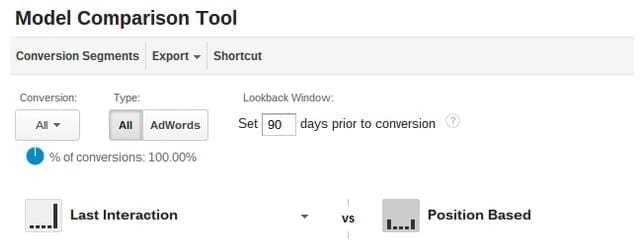SEO + PPC = $
Hi. I’m Danny Laws, principal owner of DaBrian Marketing Group. DaBrian Marketing Group is a digital marketing agency. We focus on everything from web design, to social media, Pay per Click, inbound marketing, SEO as well as google analytics, and we are Google AdWords partners. Today I want to talk a little about the effectiveness of combining SEO and Pay per Click and how that can impact the business. What’s some of the things I’m going to talk about at a high level specifically come from the Google partner, something that took place in New York about a month ago and I’ve been thinking about that lately as we go into the new year closing out Q4 [Quarter 4], and speaking with a lot of our clients about potential opportunities that combine the efforts of both SEO and Pay per Click to maximize their effectiveness.
With that being said, some of the things I want to give you a high level on the content, talk about strategies, specifically localized strategy, the impact on incremental clicks, performance, controlled visibility, the data (how do we leverage that data, right?), tailoring the message, and finally we want to talk about localized measurement and what that means for a business in its context. Kicking this off first and foremost, speaking of localized strategies, we want to take a look at the localized strategies for your business, including the SWOT analysis, your unique value proposition, your company’s position within the market, and look at how you formulate strategy as you consider SEO and Pay per Click together.
One of the most common things that we see is redundancy on ineffective keywords from both an SEO perspective and a Pay per Click perspective. Not only are you ranking for keywords that have low volume and don’t resonate with your target audience, but you’re also paying for those keywords and phrases via AdWords or Bing Ads, so compounding the issue. Ideally you want to avoid that. You also want to consider a mobile strategy. You’ve heard it, you’ve seen it, you’re looking at all the data, Google went, as far as mobile, making sure everything was mobile friendly, giving you accessibility, a number of tools to make sure that you can maximize your strategies and improve your mobile sites. That is going to be imperative closing out the 4th quarter, going into 2017.
Making sure that your products features and benefits are very clear to your customers. Not necessarily you, but what does that mean to the customer, how do those features and benefits translate. We want to make sure that we keep that at the forefront, and while you’re looking at strategies bear in mind that AdWords, Bing Ads goes way beyond simple elements of search. That’s Gmail, that’s display, that’s video. Think about that as you start to lay out your localized strategy. In some cases that’s a national strategy, but it’s still relevant.
The other piece of this is the incremental clicks. PPC generates brand awareness. It’s generally at the top of the page. You’ve seen at the top of the page and now you’re seeing it at the bottom of the page. In many cases that generates awareness around a product, an offering, or a brand. Some people, such as myself, won’t necessarily click on that knowing that it has a tendency to cause a customer cost per click. They’re paying for that click. Periodically what people do is simply take that organization and search for them that has an incremental lift in organic search queries sometimes by brand name, sometimes by offering and sometimes by service. You’re going to see that incremental lift when you combine Pay per Click and SEO just naturally by people’s own human behavior.
The performance; again looking at Pay per Click and SEO, the ability to measure lead generation, sales, as well as brand awareness is more simplistic than ever provided the tools, the enhancements, the analytics, the integrations that are out there. Call tracking is another variable that plays very much into the organic side, specifically for services being able to measure that information and seeing what’s happening. You can measure the performance as an overarching search campaign, and you could also measure them in isolation Pay per Click and SEO separately to figure out where the greatest opportunities are for you to minimize your costs and maximize the lead generation and achieve your goals’ objectives however you had them laid out within your overarching strategy.
The other piece here is controlled visibility. What we very often see in the space is Pay per Click versus SEO the potential number of customers that are coming and minimizing that cost per new customer, cost per new lead, cost for new sale, or new business relationship in its entirety, so there’s a lot of overlap in that area. Sometimes that’s a good thing and sometimes that’s a bad thing where you’re duplicating efforts. There’s definitely an opportunity to control what people see based upon the content that you’re creating and the campaigns and what they’re focused on. Whether it be a geographic footprint, whether it be a specific demographic, you name it, there’s an opportunity to control what shows up on the paid search side so that you’re not cannibalizing yourself unless it’s a necessity or a critical element of the strategy. Not necessarily a good thing in its entirety, but sometimes it can work to your benefit.
The other piece here as far as this control visibility is mobile. You have this mobile component and the opportunity to create mobile only campaigns for that call and functionality or call-only campaigns to make sure that those individuals are coming through that those are hot leads, that their intent is they want something right now. You can deliver on those results creating a greater customer experience and generally leading to more profitability, which is ideally what you want to do between SEO and Pay per Click as well as your overarching marketing and business plan.
The other piece here is limiting the redundancies in keyword targets based upon psycho-graphic, demographics, intent. Those types of things, being able to isolate them and/or figure out how you have a more cohesive strategy, is definitely an element that you want to take into consideration as you’re looking to combine SEO and Pay per Click for more impact on the business. Looking at opportunities where your visibility is organically, is it where you want to be? And, substituting and/or testing Pay per Click campaigns to make sure you’re covering the ground that you need to and being competitive in the marketplace when people are looking for products and services.
The other piece that I mentioned earlier is the data, data everywhere. You’ve got Moz Tools, you’ve got Raven Tools, you’ve got SEMrush, you’ve got Google Analytics, Adobe Analytics, you name it, you’ve got tools for mobile site, browsing tools, you name it, Site speed. If you can think of it, pretty much it’s a tool out there. How do we leverage that data? I want to give you one clear example. If you’re running Pay per Click campaigns, you’re running on the display network as an example, the display network allows you to disseminate banner ads in relevant locations within Google’s networks that resonate with your target audience, and in some cases, you’re going to see great results.
Finally, localized measurement. If you’re a business and obviously you’re on a national scale you want to look at what’s happening from a national perspective, but if you are a regional business, if you are a smaller mom-and-pop type of business, what is happening from the Pay per Click and SEO side specifically in your backyard as it relates to brand reach and visibility, lead generation, and/or sales? You don’t necessarily want to look at the world in its entirety when you’re looking at organic search traffic. Local traffic is mission critical.
Are you positioned well enough from an organic perspective and a paid search perspective? Are you leveraging just low-hanging fruit, meta-descriptions? Do you have geography, geography tags in there in some cases? Do you have site links in your Pay per Click? Do you have price extensions in your Pay per Click specific to the local market in that local offering? Do you have the map component associated with your local listing; your name, address, phone number? Do you have those elements consistently showcased on your paid search ads and on your site from a content perspective, as well as a metatag perspective. Are you leveraging rich snippets (schema tags)? Anything that you can do to maximize that reach and visibility from a local perspective is mission critical for your business in order to make sure that you’re getting people from your own backyard and capturing those opportunities that are most cost-effective.
In addition to that is looking at the return on advertising dollars. I’ve seen it and I’ve been on pretty much a world tour the past 4 days it feels like, but every presentation that I go to I hear agency folks talk about ROI, ROI. Not saying it’s not important, but as an agency ourselves, we can’t control every variable that’s associated with ROI, so we try to focus on that return on ads and return on marketing dollars. What did you get back on those marketing dollars? At the localized level you need to take that into deep consideration because you’re going to have a number of people come to you saying, we can create that reach and visibility, but I think we also have to make sure that we’re looking at return on ads spend at the localized level.
With that, I would say, check us out on our social media network for more content. Don’t hesitate to comment on the video and let us know what you would like to see that’s going to be more useful for you to maximize SEO and Pay per Click together as well as our digital marketing services. Any question you have don’t hesitate to reach out to us on social media as well as our YouTube channel. Thank you much. Have a great day.



